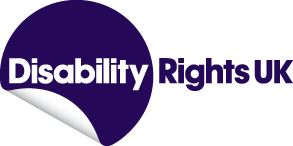Four in ten banks fail Disabled customers, says Which?
Banks are failing to support their Disabled customers as widespread branch closures and the shift to online banking make it increasingly difficult for them to access cash and vital everyday financial services, Which? research has found.
The consumer champion surveyed nearly 1,500 Disabled banking customers about their experiences. Despite some banks being highly rated by customers, Which? identified issues with accessibility of branches and ATMs, poor communication from banks and a lack of tailored assistance.
Branches can be a lifeline for many Disabled customers, but the widespread closure of bank branches across the UK appears to be significantly impacting Disabled consumers. By the end of 2021, almost 4,300 UK branches will have closed since 2015, a 44% cut in the network.
Four in 10 (41%) Disabled consumers in Which?’s survey said these closures had a negative impact on their ability to access bank services, rising to more than half (54%) of NatWest customers and nearly six in 10 (58%) Barclays customers.
In response to branch closures, banks generally point people towards digital banking. However, among Disabled consumers who bank online, one in ten (11%) told Which? they find it difficult to navigate their bank’s website. One in five (18%) people find it difficult to use their bank’s security measures, rising to one in three (30%) of those with memory difficulties.
The findings also highlight issues with telephone banking as a quarter of Disabled consumers in Which?’s survey (36%) said they find it difficult speaking to their bank over the phone.
Even branches that remain open often lack comprehensive accessibility for Disabled consumers, according to the research.
A third (34%) of respondents told Which? they find it difficult to use bank branch services.
Separate Which? research into the accessibility of individual banks found that wheelchair access is particularly limited at Barclays branches. Only eight in ten (85%) Barclays branches have wheelchair access, while deaf or hard of hearing customers can only access hearing loops at 94 per cent of branches. For all other banks Which? looked at, it was at least 98 per cent.
In addition to the challenges posed by branch closures, Disabled consumers also face problems when trying to access cash, which has already been squeezed as a result of extensive cuts to the ATM network in recent years.
Only 3% of Allied Irish Banks’ cash machines are audio-enabled, for example, and just three quarters (73%) of HSBC ATMs are accessible to wheelchair users.
Which? also found that public data supplied by the nine largest UK banks, that should display how many branches and cash machines are accessible to Disabled people, was unreliable, which risks customers getting false information if they are searching for a suitable location through their bank’s app.
For instance, Lloyds told Which? that all branches have hearing loops, yet the data published through its ‘public application programming interfaces’ (APIs) states this figure as only two per cent.
Others, including Nationwide, NatWest Group and Santander, weren’t able to confirm full accessibility data at all. The Competition and Markets Authority told Which? that suggestions of banks not meeting their open banking obligations to provide data on ATMs’ accessibility would be taken “very seriously”.
While banks have a legal obligation under the Equality Act 2010 to make reasonable adjustments for Disabled customers, and should also anticipate Disabled customers’ needs, one in seven (14%) respondents in Which?’s survey rated their banks as “poor” at respecting their communication preferences.
Individual banks were also rated by their Disabled customers in the Which? survey. First Direct came top of the ratings, with more than nine in ten (95%) of customers saying they’re fairly or very satisfied with their bank. Nationwide, in second place overall, was the top-rated provider with a branch network.
Despite being parent bank to First Direct, HSBC received the lowest level of satisfaction from customers (62%), followed by TSB (65%). TSB earned just two stars for both online and branch banking, with HSBC earning an average of three stars across the board.
As a result of its research, Which? is concerned that access to banking services is being severely curtailed by the rapid rate of bank branch and ATM closures, and this is hitting those with greatest need in society hardest.
